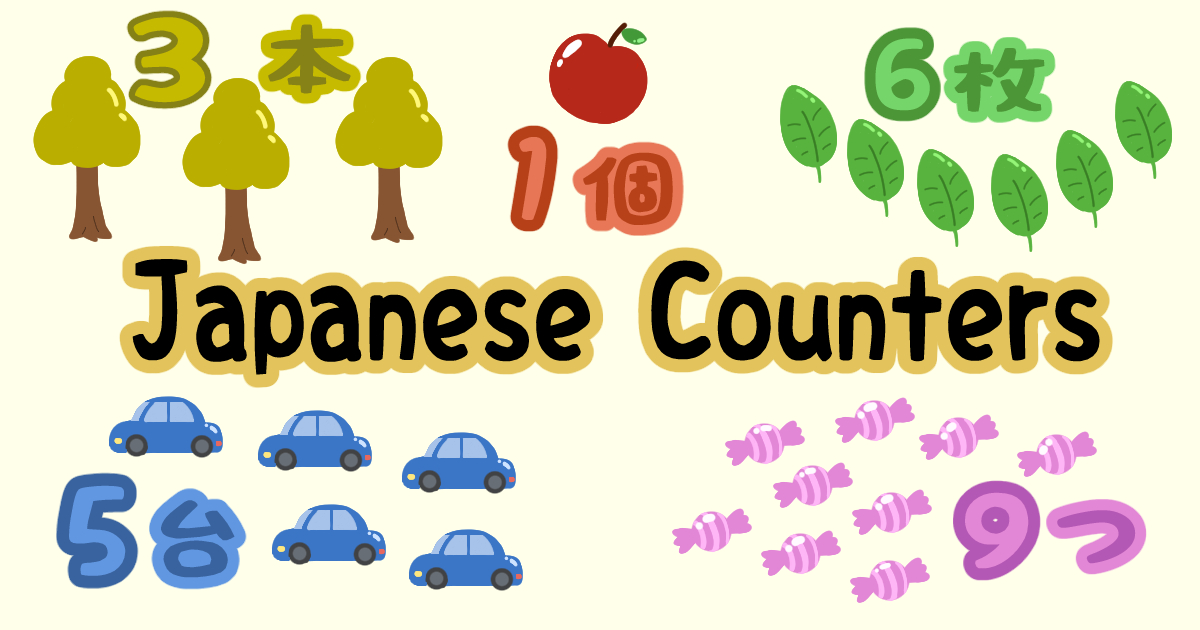You need to learn lots of difficult grammar rules when you are studying Japanese. In particular, learning Japanese counters is hard because Japanese has hundreds of counters.
But it’s not necessary for you to know all the counters. It is enough in daily life conversation to know the basic Japanese counters.
We’ll share Japanese counters that native speakers usually use in daily conversation in this article.
Learning points
- Basic Japanese counters (つ、個、枚、本、台)
- Right words for each Japanese counter
- Real usage
The most common Japanese counters
~つ(tsu)
つ(tsu) is one of the most common counters in Japanese. It is mostly used for little stuff like candy, fruit, and tools.
This counter is used with native Japanese numbers. (These are called Wago, or Yamato language).
The つ(tsu) counter can be also used for something abstract, like ideas, rules, and information.
| 1つ | 2つ | 3つ | 4つ | 5つ | 6つ | 7つ | 8つ | 9つ | 10 |
|---|---|---|---|---|---|---|---|---|---|
| ひとつ /hitotsu/ | ふたつ /futatsu/ | みっつ /mittsu/ | よっつ /yottsu/ | いつつ /itsutsu/ | むっつ /muttsu/ | ななつ /nanatsu/ | やっつ /yattsu/ | ここのつ /kokonotsu/ | とお /toh/ |
 | 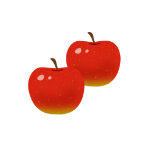 | 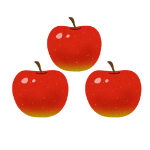 | 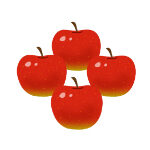 | 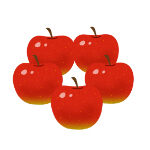 | 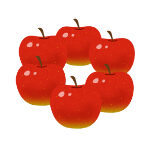 | 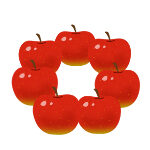 | 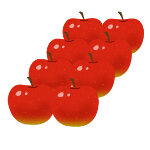 | 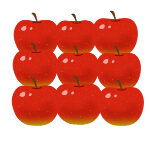 | 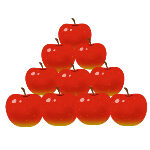 |
-Practice-
Let's learn how to use つ counter in sentences.
・リンゴを3つ買った
I bought three apples
・いいアイデアが2つあるよ
I have two good ideas
・4つのチームを作る
Make four teams
Check!
In real conversation, native Japanese speakers say ~つ(tsu) for things that are less than ten.
This is because it’d make the number too long if you go over ten.
If you want to know the way to say ~つ(tsu) for more than ten, please check our other article, how to count things with ~つ(tsu) (Currently in progress).
So, how do Japanese people count when they count little things more than ten?
They use ~個(ko), which we’ll talk about next.
~個(ko)
個(ko) can be used in the same way as the つ counter. It is a counter for little objects and is counted with current Japanese numbers. (Not Wago.) The difference of 個(ko) and つ(tsu) is that 個(ko) is used for something concrete and generally, something not grouped together (like in pairs).
| 1個 | 2個 | 3個 | 4個 | 5個 | 6個 | 7個 | 8個 | 9個 | 10個 | 11個 | 20個 | 100個 | 1000個 | 10000個 |
|---|---|---|---|---|---|---|---|---|---|---|---|---|---|---|
| いっこ /ikko/ | にこ /niko/ | さんこ /sanko/ | よんこ /yonko/ | ごこ /goko/ | ろっこ /rokko/ | ななこ /nanako/ | はちこ /hachiko/ | きゅうこ /kyuko/ | じゅっこ /jukko/ | じゅういっこ /juikko/ | にじゅっこ /nijukko/ | ひゃっこ /hyakko/ | せんこ /senko/ | いちまんこ /ichimanko/ |
 |  |  |  |  |  |  |  |  |  |  |  |  |  |  |
-Practice-
I had two pieces of cake.
・コップを6個用意する
I’ll prepare six glasses.
・友達にキャンディーを8個あげた
I gave eight candies to my friends.
~枚(mai)
When you want to count something thin, floppy, and paper-like, you count them with枚(mai). You can use 枚(mai) for paper, money, and even for sliced cheese.
The 枚(mai) counter is counted with the current Japanese numbers.
| 1枚 | 2枚 | 3枚 | 4枚 | 5枚 | 6枚 | 7枚 | 8枚 | 9枚 | 10枚 |
|---|---|---|---|---|---|---|---|---|---|
| いちまい /ichimai/ | にまい /niimai/ | さんまい /sanmai/ | よんまい /yonmai/ | ごまい /gomai/ | ろくまい /rokumai/ | ななまい /nanamai/ | はちまい /hachimai/ | きゅうまい /kyumai/ | じゅうまい /jumai/ |
 |  |  |  | 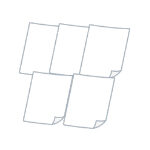 | 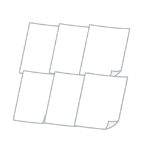 | 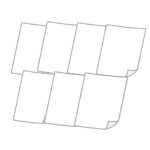 | 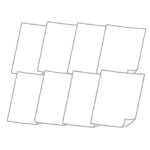 |  |  |
-Practice-
Turn two pages.
・ティッシュを3枚とる
Take three tissues.
・コンサートのチケットを4枚もらった
I got four tickets for a concert.
~本(hon)
You use ~本(hon) when you want to count something long and stick-like. The size doesn’t matter in this counter. For example, pens are counted with 本(hon) and poles are also counted with it.
~本 has a slightly difficult rule for counting. When the numbers change, the pronunciation of 本(hon) changes from hon to ‘pon’ and ‘bon’.
| 1本 | 2本 | 3本 | 4本 | 5本 | 6本 | 7本 | 8本 | 9本 | 10本 |
|---|---|---|---|---|---|---|---|---|---|
| いっぽん /ippon/ | にほん /nihon/ | さんほん /sanhon/ | よんほん /yonhon/ | ごほん /gohon/ | ろっぽん /roppon/ | ななほん /nanahon/ | はっぽん /happon/ | きゅうほん /kyuhon/ | じゅっぽん /juppon/ |
| さんぼん /sanbon/ | ろくほん /rokuhon/ | はちほん /hachihon/ | |||||||
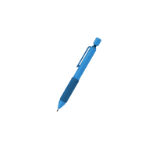 | 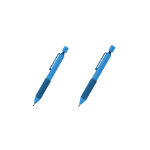 | 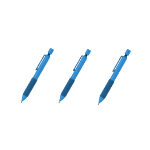 | 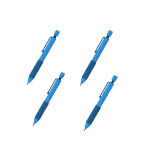 | 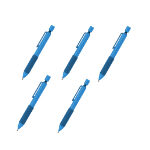 | 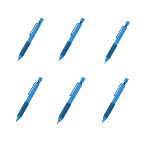 |  | 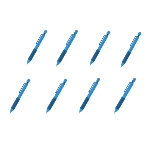 | 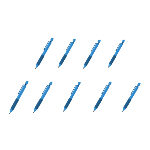 | 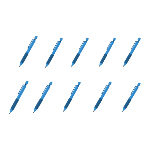 |
The pronunciation of 本 for the number more than ten uses the pronunciation for the last number as the numbers less than ten. For example, 13本 is jyuusan bon, because 3本 is san bon.
Caution!
Be careful when you count chopsticks because chopsticks are not countable with 本, even if they're stick-like.
It is counted with 膳(zen) because it is a pair of chopsticks. If you just want to count one chopstick, 本 is okay for counting.
~台(dai)
~台(dai) is the counter for machines and cars. For example, laptops, laundry machines, fridges, TVs, copy machines, and cars. Pianos are also counted with 台(dai).
| 1台 | 2台 | 3台 | 4台 | 5台 | 6台 | 7台 | 8台 | 9台 | 10台 |
|---|---|---|---|---|---|---|---|---|---|
| いちだい /ichidai/ | にだい /nidai/ | さんだい /sandai/ | よんだい /yondai/ | ごだい /godai/ | ろくだい /rokudai/ | ななだい /nanadai/ | はちだい /hachidai/ | きゅうだい /kyudai/ | じゅうだい /judai/ |
 | 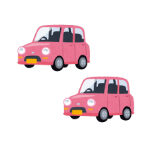 | 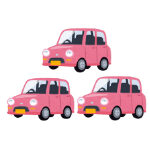 | 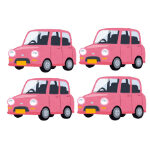 | 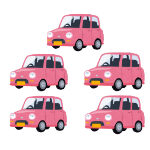 | 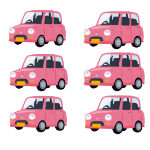 | 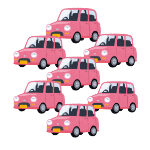 | 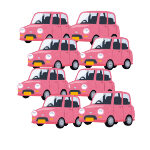 | 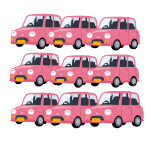 | 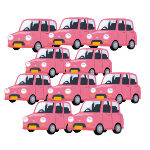 |
-Practice-
Buy two laptops
・車が5台並んでいる
There are five cars in a row
・ピアノを1台運ぶ
Carry a piano
Big category first, small category later
We shared about the five most common Japanese counters in daily life. You won’t run into any big problems if you have these counters under your belt.
But Japanese has other counters beside the counters we shared in this article.
For example, animals are counted with different counters. The species of animals also change the counter!
Dogs, cats, birds, and fish ‒ how do Japanese people count them?
If you’re interested, check the next article “How to count animals in Japanese”(Coming soon)!

